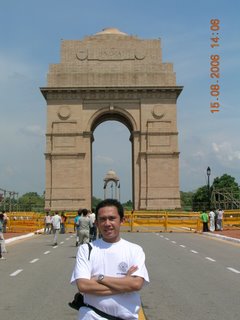The Scope of Urban Hydrology
Several authors, including Savini and Kammerer (1961), Leopold (1968), Hall (1973) and Cordery (1976), have described the changes in flow regime which occur when an initially rural catchment area is subject to urbanization. The particular aspects of urbanization which exert the most obvious influence on hydrological processes are the increase in population density and the increase in building density within the urban area. The consequences of such changes are outlined diagrammatically in FIG. 1.4.
As the population increases, water demand begins to rise. This growth in demand is accelerated as standards of living are raised and compounds the problem of developing adequate water resources – the first of the major hydrological problems.
Once the initial stages of urbanization have passed and sewerage systems are installed for both domestic and surface water drainage, the amount of waterborne waste increases in response to the growth in population. However, the resultant water quality changes are intimately linked with the consequences of the increase in building density. As the latter rises, the extent of impervious area also increases, the natural drainage system is modified and the local microclimate changes. Owing to the larger impervious area, a greater proportion of the incident rainfall appears as runoff than was experienced when the catchment was in its rural state. Furthermore, the laying of storm sewers and the realignment and culverting of natural stream channels which takes place during urbanization result in water being transmitted to the drainage network more rapidly. This increase in inflow velocities directly affects the timing of the runoff hydrograph. Since a larger volume of runoff is discharged within a shorter time interval, peak rates of flow inevitably increase, giving rise to the second of the major hydrological problems-flood control.
The inadvertent changes in the microclimate which accompany the growth of urban areas may at first sight appear somewhat irrelevant in comparison to the changes in the hydrological cycle brought about by urbanization. Nevertheless, further consideration of the available evidence, as presented by Landsberg (1981a, b), for example, shows that, since all aspects of climate are affected to some extent by urban development, some attention should be devoted to the possible consequences of such changes in terms of infrastructure design. For example, in drainage design practice, particular importance is attached to the frequency of heavy rainfalls within predetermined durations. Changes in the relationship between rainfall depth, duration and frequency may therefore alter the degree of protection afforded by engineering works subsequent to their design and construction. Possible allowances for such changes are most conveniently treated as a supplementary aspect of the flood control problem.
As FIG. 1.4. demonstrates, the water quality aspects of the hydrologi¬cal cycle are affected by both the rise in population and the increase in the extent of the impervious area. Since the volume of runoff becomes larger with the onset of development, the amount of soil moisture recharge is reduced. Consequently, less water is likely to percolate into any aquifer underlying the urban area. Between storm events, the baseflow within the natural drainage system is derived from such subsurface storages. Low flows may therefore be expected to decrease as the urbanization of an area proceeds. Unfortunately, this decrease occurs simultaneously with the increase in the volume of waterborne wastes referred to above and the deterioration in the quality of stormwater runoff as contaminants are washed from streets, roofs and paved areas. The disposal of both solid and waterborne wastes may also have an adverse effect upon groundwater quality. The degradation of the quality of the flows in both the drainage network serving the urban area and the underlying aquifers gives rise to the third of the major hydrological problems - pollution control.
In summary, the process of urbanization may be seen to create three major hydrological problems: the provision of water resources for the urban area that are adequate in both quantity and quality; the preven¬tion of flooding within urban areas; and the disposal of waterborne wastes from urban areas without impairing the quality of local water¬courses. Of these three problems, that of water supply forms part of the wider subject of water resources development, and is beyond the scope of this text. Nevertheless, two distinct attitudes to the develop¬ment of water resources for rapidly growing urban areas may be identified in current practice.
Posted by: JRP






0 comments:
Post a Comment